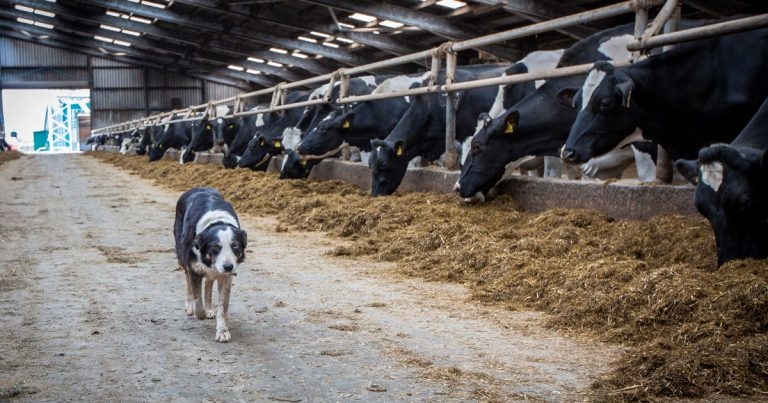4 Feb 2022
Results indicate animals in a control group were 2.57 times more likely to be lame at second evaluation compared to those that had received an IM injection of a ketoprofen product.

A study1 has highlighted the benefits of using ketoprofen to treat pain and lameness associated with digital dermatitis (DD) in cattle.
Lameness, a significant problem facing the worldwide dairy industry, has an impact on health, welfare and production, and can lead to economic losses2. It has been associated with reduced milk yield3, mastitis4, and infertility5, and is prevalent in dairy herds in Europe and North America6,7.
In the UK, herd lameness prevalence is 30.1%8, while DD is one of the most frequently recorded diseases associated with dairy cattle lameness9.
In the ketoprofen study, 158 cows presented with active DD (M1, M2 or M4.1 stage) were randomly allocated to either the control or the treatment group. All were treated with a topical application of oxytetracycline spray.
The treatment group also received an intramuscular injection of Ceva’s Ketofen 10% solution for injection (ketoprofen 3mg/kg). Cows were mobility scored just before they were treated and then again one week later.
Results indicated animals in the control group were 2.57 times more likely to be lame at second evaluation compared to the group treated with Ketofen.
Cows lame in the control group prior to treatment that did not receive Ketofen were more than 20 times more likely to remain lame a week post-treatment compared to cows that did receive it.
The same study also showed a milk yield benefit overall. Treated cows produced 2.98kg more milk than control cows (T=45.35 C=42.37, p<0.01).
When only lame fresh cows were considered, a 10.49kg increase in milk yield was seen (T=58.38 C=47.89 p<0.05).
Nick Bell, veterinary surgeon and director of Herd Health Consultancy, said: “We’ve widely recognised the importance of NSAIDs for treating claw lesions, which are primarily inflammatory conditions, but this study is the first real insight into how important NSAIDs are for any lesion, including digital dermatitis – particularly if the cow is showing signs of lameness.
“This research provides a clear welfare justification for giving NSAIDs to dairy cows with active digital dermatitis lesions, with significant milk yield benefits.”
Katherine Timms, ruminant veterinary advisor at Ceva Animal Health, added: “While it is recognised that some stages of digital dermatitis are painful, there has been little research to determine the value of including analgesia in the treatment of the condition.
“This study suggests that the use of Ketofen in the treatment of pain and lameness associated with active digital dermatitis lesions may be beneficial for animal welfare as it is associated with an improvement in mobility scores.”
1. Kasiora K et al (2021). Evaluation of the use of ketoprofen for the treatment of digital dermatitis in dairy cattle: a randomised, positive controlled, clinical trial, Vet Record e977.
2. Willshire J and Bell NJ (2009). An economic review of cattle lameness, Cattle Practice 17(2): 136-141.
3. Amory JR et al (2008). Associations between sole ulcer, white line disease and digital dermatitis and the milk yield of 1824 dairy cows on 30 dairy cow farms in England and Wales from February 2003-November 2004, Preventive Veterinary Medicine 83(3-4): 381-391.
4. Peeler EJ et al (1994). Inter-relationships of periparturient diseases in dairy cows, Vet Record 134(6): 129-132.
5. Huxley JN (2013). Impact of lameness and claw lesions in cows on health and production, Livestock Science 156(1-3): 64-70.
6. Dippel S et al (2009). Risk factors for lameness in freestall-housed dairy cows across two breeds, farming systems, and countries, Journal of Dairy Science 92(11): 5,476-5,486.
7. Solano L et al (2016). Prevalence and distribution of foot lesions in dairy cattle in Alberta, Canada, Journal of Dairy Science 99(8): 6,828-6,841.
8. Randall L et al (2019). Lameness prevalence in a random sample of UK dairy herds, Vet Record 184(11): 350.
9. Bell N and Vanhoudt A (2020). Treating and controlling digital dermatitis in dairy cattle, In Practice 42(10): 554-567.